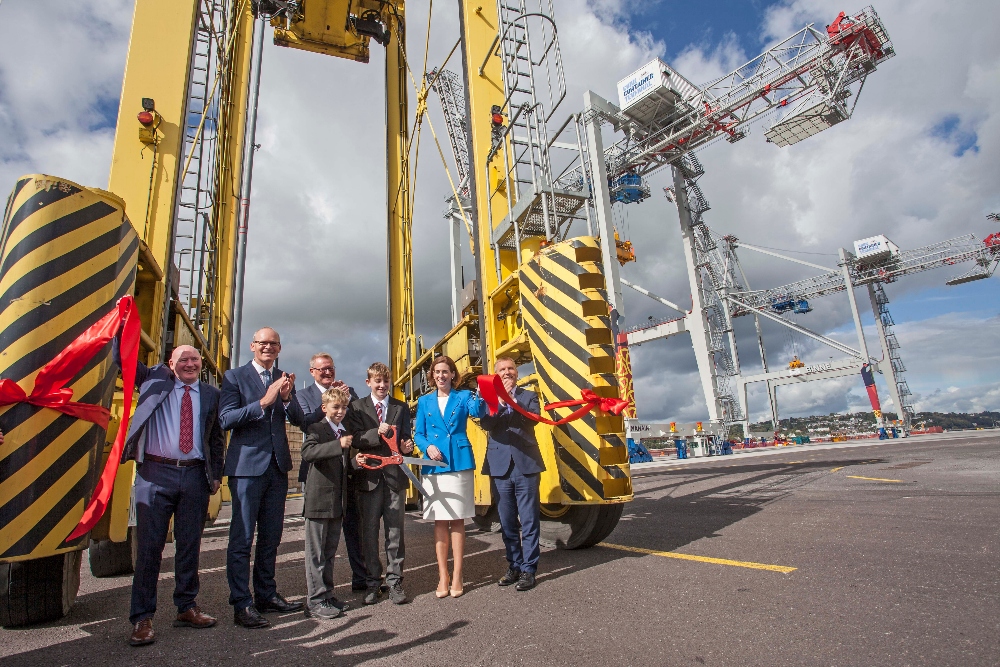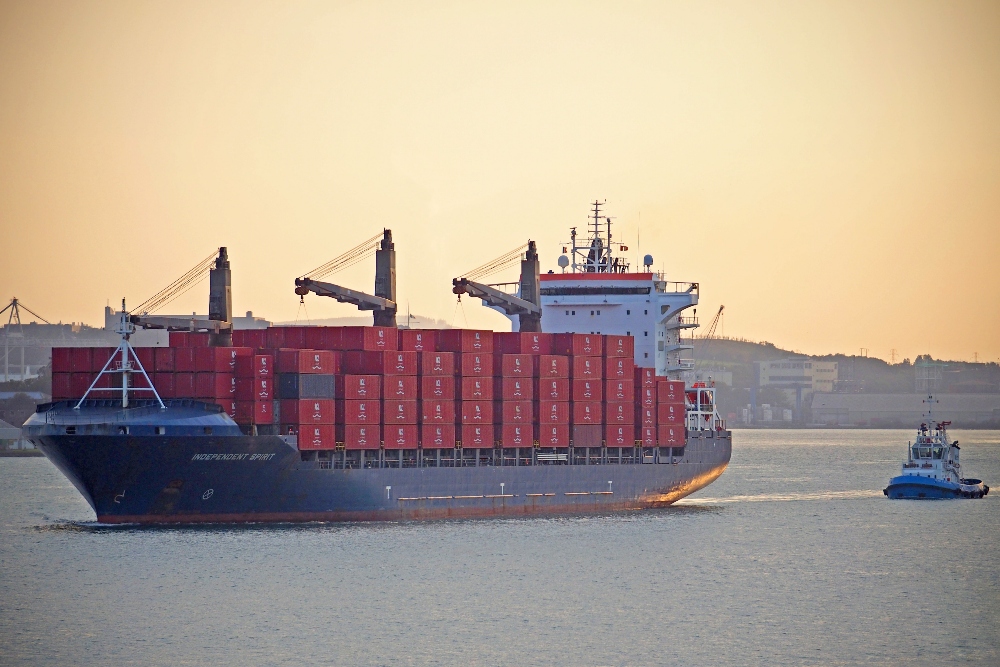Cork Container Terminal represents ‘the biggest investment in port infrastructure in the history of the State’.
The Port of Cork Company (PoCC) has officially launched its new state-of-the-art Cork Container Terminal (CCT) in Ringaskiddy.
The launch of CCT is a hugely important milestone for the PoCC and represents the largest single investment in marine infrastructure of any Irish port over the last 100 years.
“By increasing the efficiency of infrastructure, the costs of trade will reduce, which in turn helps to reduce inflation and the cost of living. It will also bring value to exporters, and a boost to Irish business”
The Port of Cork is the world’s second-largest natural harbour and is a key international gateway for trade. It is the key seaport in the south of Ireland and is one of the three Ports of National Significance (Tier 1) as designated by National Ports Policy.
As a multi-model port it is only one of two ports in Ireland to service all six shipping modes – lift on/ lift off, roll-on/ roll-off, liquid bulk, dry bulk, break bulk and cruise.
The new terminal, which is the result of an €89m investment, became operational in April 2022 and enables the port to deliver more efficient container handling facilities.
With one of the largest deep-water, multimodal berths in the world (13-meter depth and 360 meters in length), the container vessels that can be facilitated in Ringaskiddy will be the largest that can be accommodated anywhere in Ireland.
When fully operational, on completion of the M28 road network, CCT will have the capacity to handle 330,000 TEUs (Twenty-foot Equivalent Unit) of cargo. This is set to have significant economic benefits for Cork and the Munster region, as well as the national economy.
Benefits to national economy
PoCC chair Michael Walsh said that CCT represents the first phase of an overall proposed development plan for the Port of Cork.
“CCT represents the biggest investment in port infrastructure in the history of the state. It will bring further efficiency to the port with major benefits to the local and national economy,” Walsh said. “By increasing the efficiency of infrastructure, the costs of trade will reduce, which in turn helps to reduce inflation and the cost of living. It will also bring value to exporters, and a boost to Irish business.
“This is the beginning of an exciting new chapter at Port of Cork as we seek to meet the next phase of needs of our community and customers. As we look forward towards a Vision for 2050, we see huge potential for our beautiful harbour to continue its role as a focal point for our community to live in and enjoy, as well as a key gateway for global trade and enabler of Net Zero.
“We would like everyone’s help in developing a new Masterplan to 2050, which will act as a blueprint for the future growth and development of the Port of Cork. I encourage our local community, customers and national stakeholders to share their ideas when we launch a consultation on our draft plan in the coming weeks.”
Earlier this year, as part of the CCT journey and to help welcome the new colossal cranes to the Cork harbour community, PoCC hosted a competition with local primary schools to ‘Name the Cranes’. The winning names for the two giant 50m ship-to-shore Liebherr cranes, as chosen by Crosshaven Boys’ National School were ‘Mahain’ and ‘Binne’, inspired by the old Irish folklore story about two giants who lived in Cork harbour.
Minister Hildegarde Naughton with special responsibility for transport and logistics, spoke about the importance of Maritime Transport for Ireland at the official opening last week (23 September). “Maritime transport accounts for more than 90% of Ireland’s international trade and the Port of Cork has played an integral role in keeping Ireland connected, as part of the global supply chain,” the Minister said.
“The Cork Container Terminal is already strengthening Port of Cork’s position on a global scale and on completion of the M28 will welcome further increased capacity for international transport and trade. It is also important to acknowledge the Port’s success in completing the project despite the challenges brought about in recent years by Covid-19 and Brexit. I offer my warm congratulations to everyone involved. The Port of Cork and Dublin are the only ports in Ireland capable of servicing all six shipping modes – lift-on/lift-off, roll-on/roll-off, liquid bulk, dry bulk, break bulk and cruise. On that basis, the Ringaskiddy re-development will be beneficial not only to the Port, its customers and Cork, but to the entire country.”
As one of Europe’s core ports, PoCC is developing a Masterplan to 2050, which will act as a blueprint for the growth and development of the Port of Cork over the next number of years. Details of which to be delivered in the months ahead, following public consultation.
“As we look toward the future, reducing Ireland’s carbon emissions and creating a cleaner, greener future is a priority which will require a joint effort from everyone, including industry and businesses nationwide,” said Eoin McGettigan, CEO, PoCC.
“I would like to reaffirm the Port of Cork Company’s commitment to playing its part on this journey, particularly with facilitating the development of the Offshore Renewable Energy sector in Cork harbour over the next few years.”
Cork Container Terminal in numbers
- €89 million investment over 4 years
- 2 Liebherr Ship to Shore Cranes – 50m height
- 8 Straddle Carriers
- Operational 24/7
- 39-hectare site
- Capacity for 330,000teu
- One of the longest multimodal berths, 360 meters in length with the potential to cater to any type of shipping
- One of the largest deep water berths in the world with 13-meter depth
- Vessel draft of 12 meters
- Capacity to store 492 refrigerated containers
- 400 truck movements per day when fully operational
- Currently operating at 50% capacity until completion of M28
- Across the 39-hectare site, the development consists of; an optimised 360m multimodal berth with the potential to cater to any type of shipping; two giant 50 meter high ship-to-shore cranes; a straddle carrier operating system with 8 straddle carriers; capacity to store 492 refrigerated containers; new maintenance and customs & excise buildings and a digitised vehicle booking system. It also includes a Recreation Area at Paddy’s Point, new Deepwater Berth entrance and internal port road network.






